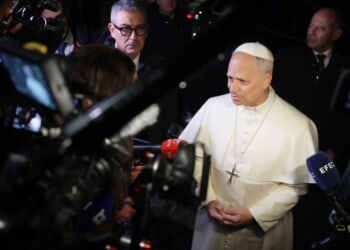Watt’s Happening aims to provide breaking news, sharp analysis, and thoughtful commentary from the cutting edge of the energy sector as this dynamic area of the world continues to expand and grow before our eyes.
Weekly Highlights:
The Resurrection of Revolution Wind
After being cancelled by the Trump administration, the Revolution Wind project has been given new life after a judge granted a preliminary injunction on the basis of the fact that the Department of the Interior’s decision to stop the project lacked any “factual findings.” While the company in charge of the Revolution Wind project — the Danish company Ørsted — has indicated that it intends to continue its lawsuit against the Department of the Interior in the courts, this marks the second offshore wind project that was resurrected after other actors stepped in. Not long ago, the Empire Wind project was revived after heavy lobbying forced the Trump administration to change its mind.
Electrifying Glassmaking
While everyone’s attention has been focused on the question of whether data centers can be green, the green energy revolution has applicability to other areas and industries as well. One such area is glassblowing. Although it has been around forever, one thing about the process that hasn’t changed is the fact that the furnaces used to make the glass have to reach temperatures higher than 3,000°F. It is not surprising that this requires a lot of energy, often gained by burning fossil fuels. However, one company in Germany — Schott — is attempting to change this by using energy sourced from renewable energy to fuel its blast furnaces. If successful, the company has pledged to expand this initiative wherever possible and economically feasible.
Utility Companies Flunk the Test
When Ronald Reagan ran for president in 1980, one of his lines was, “Are you doing better than you were four years ago?” If utilities were asked a similar question — “Are you doing better in terms of green energy than you were five years ago?” — their response would achieve a failing grade. According to the Sierra Club’s annual “The Dirty Truth” report, the utility sector as a whole is actually doing worse in terms of transitioning to green energy than they were when the Sierra Club began tracking five years ago. While some people have blamed the pro-fossil fuel agenda of the Trump administration for the backsliding, others date the start of the decline to earlier, when the AI revolution took off under the Biden administration.
Pennsylvania Falls Short
There was a time not very long ago when Pennsylvania was a leader in the clean energy transition movement. Indeed, in the early 2000s, the state passed a law mandating that a certain part of its energy mix had to come from renewable sources. That was a triumph, and Pennsylvania seemed to be on the right trajectory. Then came the fracking revolution and the rise of natural gas as a clean bridge to green energy. That may be, but the state is still addicted to natural gas, and the supposed “bridge” has become a quagmire that occupies 60 percent of Pennsylvania’s energy portfolio. What’s even worse is that Pennsylvania ranks second to last in the nation for renewable energy growth.
DOE Pulls Critical Funds From Clean Energy
In the wake of President Trump’s speech at the United Nations, the Department of Energy has once again acted to reverse an action done by the Biden administration. That is, President Biden allotted $13 billion in unobligated funds to various green energy projects, including wind, solar, and electric vehicles. Now, Secretary of Energy Chris Wright has reversed that decision, citing the previous administration’s “reckless spending on climate spending” and pledging that this administration will be dedicated to “advancing more affordable, reliable, and secure American energy and being more responsible stewards of taxpayer dollars.”
About the Author: Toni Mikec
Toni Mikec is the managing editor for Energy World, a publication of the Center for the National Interest. Before that, he worked as a political consultant for Your Voter Guide in Sacramento and as a senior editor at Eagle Financial Publications in Washington DC. He holds a B.A. in International Relations (summa cum laude) from the University of California, Davis and a M.A. in International Relations and International Economics from the Johns Hopkins School of Advanced International Studies.
Image: Shutterstock/Panuwatccn


















